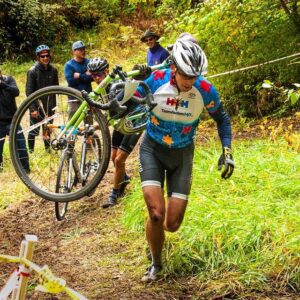Gravel Fatigue Syndrome: Emerging Challenges for Gravel Cyclists
As gravel cycling experiences a remarkable surge in popularity, attracting both competitive racers and recreational riders, a new concern has surfaced within the community: Gravel Fatigue Syndrome (GFS). This condition reflects the cumulative physical and psychological strain caused by extended rides over rugged, uneven surfaces. Riders affected by GFS often face symptoms such as persistent exhaustion, muscle discomfort, and mental weariness that can diminish both their performance and overall enjoyment of the sport. With more cyclists embracing off-road adventures on gravel paths worldwide—estimated to have grown by over 30% in participation since 2020—experts are urging awareness and proactive management of this emerging issue. This article explores the origins, signs, risk factors, and effective strategies to address Gravel Fatigue Syndrome for those seeking sustainable endurance on dirt trails.
What Is Gravel Fatigue Syndrome? Understanding Its Effects on Cyclists
Gravel Fatigue Syndrome is increasingly recognized as a distinct challenge among endurance athletes who frequently tackle long-distance rides across unpredictable terrain. Unlike traditional road cycling that benefits from smoother surfaces, gravel riding demands continuous adaptation to shifting conditions such as loose stones, ruts, and variable gradients. These factors amplify muscular strain—especially in stabilizing muscles—and elevate cardiovascular stress over prolonged periods.
Cyclists experiencing GFS commonly report:
– Lingering tiredness that does not resolve with typical rest
– Muscle soreness concentrated in lower limbs and core
– Slower recovery times between training sessions or events
Moreover, inadequate attention to nutrition—particularly insufficient intake of electrolytes—and suboptimal hydration exacerbate these symptoms during grueling rides lasting several hours or more.
Beyond physical fatigue lies an equally important mental dimension; many riders notice diminished motivation to train or compete alongside mood disturbances like irritability or anxiety. Early recognition of these warning signs is crucial for preventing further decline in performance.
Key Indicators of Gravel Fatigue Syndrome
- Ongoing muscle weakness despite rest days
- Reduced power output during rides
- Lack of enthusiasm toward training sessions
- Disrupted sleep patterns affecting recovery quality
To counteract GFS effectively requires integrating comprehensive recovery protocols into one’s routine—including scheduled rest days—as well as tailored nutritional support focusing on protein replenishment and electrolyte balance before, during, and after rides.
| Recommended Practice | Description |
|---|---|
| Scheduled Rest Days | Aim for at least one to two full rest days weekly to allow muscle repair. |
| Nutritional Support | Incorporate protein-rich foods/supplements plus electrolyte drinks post-exercise. |
| Hydration Strategy | Create personalized hydration plans covering pre-, intra-, and post-ride phases. |
Spotting Symptoms Early & Understanding Who Is Most at Risk for GFS
Heightened awareness about Gravel Fatigue Syndrome underscores the importance of identifying its diverse manifestations promptly. The syndrome’s impact extends beyond mere tiredness; it can disrupt daily activities due to combined physical discomforts and cognitive challenges often described as “brain fog.”
Commonly reported symptoms include:
- Persistent exhaustion unrelieved by sleep or downtime;
- Mood swings ranging from irritability to heightened anxiety;
- Cognitive difficulties such as impaired focus;
- Aching muscles or joints without obvious injury;
- Sleeplessness or excessive sleepiness interfering with normal routines.
Certain individuals may be predisposed due to specific risk factors:
- A history involving chronic illnesses like autoimmune diseases or prior chronic fatigue conditions;
- Sustained high stress levels stemming from occupational pressures or personal circumstances;
- A genetic background indicating susceptibility based on family medical records;
- The influence of environmental exposures including pollutants which may compound physiological stress responses.
Recognizing these vulnerabilities enables timely intervention through lifestyle adjustments or professional guidance aimed at mitigating progression toward severe fatigue states.
Proven Approaches From Experts: Managing & Preventing Gravel Fatigue Effectively
Specialists advocate adopting an integrative strategy combining physical conditioning with psychological resilience-building techniques when addressing Gravel Fatigue Syndrome. Monitoring workload intensity closely helps prevent overtraining—a common pitfall among enthusiastic gravel cyclists eager to push limits continuously.
Cross-training modalities such as swimming laps regularly improve cardiovascular fitness while reducing repetitive strain injuries common in cycling-specific muscles. Yoga practices enhance flexibility along with mental calmness; strength training fortifies supporting musculature critical for stability on uneven ground surfaces.
Nutrition remains foundational: consuming balanced meals rich in complex carbohydrates fuels sustained energy release; adequate proteins facilitate tissue repair; healthy fats support inflammation control—all complemented by consistent fluid intake tailored individually according to sweat rates measured under various weather conditions.
Mental health care should be integrated seamlessly into athletic routines through mindfulness exercises like guided meditation sessions or controlled breathing drills proven effective against ride-related anxiety spikes.
Setting achievable milestones fosters motivation even amid challenging periods marked by fatigue symptoms while consulting sports psychologists familiar with endurance athlete needs provides customized coping mechanisms enhancing long-term adherence.
| Main Focus Area | Evidenced-Based Recommendations |
|---|---|
| Training Management < td >Track exertion levels carefully & diversify workouts via cross-training activities (e.g., swimming/yoga/strength) | |











